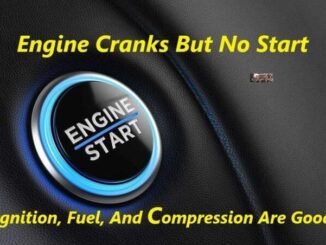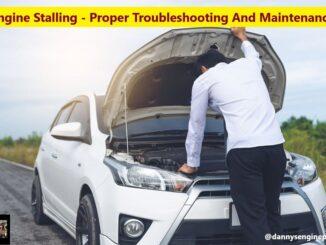
The installer’s worst nightmare, repeat engine failures, from a lack of proper diagnosis.
So, you have replaced an engine, cylinder head, or crankshaft in your vehicle. But, a short time later, you have repeat engine failures, for the same problem. Consequently, not finding the original problem, can cause repeat engine failures, costing a ton of money and down time.
Another common mistake in diagnostics is, falsely condemning a part, that is really just out of adjustment. Consequently, adding to, repeat engine failures.
Repeat engine failures, are nothing new. Consequently, there are many other problems that occur in today’s vehicles. However, most cannot be fixed by replacement alone. For instance, a failure of an engine, cylinder head, or crankshaft, is only the end result. And, not the cause, of the original problem.

Computers and sensors control, almost all of today’s vehicles. So, any one of them failing, can also cause, repeat engine failures.
So, the engine, piston, or cylinder head is replaced. But, shortly after, the customer returns with the same, or a new problem. Because, finding and correcting the original problem, never did happen. And, quite often its a leaking or blown head gasket.

So, before replacing any of these components, you must first find the original problem that caused, the original failure.
Diagnostic Steps, To Avoid Repeat Engine Failures:
Step-1
Verify the Problem
Before one minute is spent on diagnosis, be certain that a problem actually exists. Because, if the problem cannot be confirmed. Then, the problem cannot be solved or tested, to verify that the repair was complete.
Step-2
Perform a Thorough Visual Inspection and Basic Tests
The visual inspection is the most important aspect of diagnosis! Most experts agree, that most engine problems can be found, simply by performing a visual inspection.
Step-3
Retrieve the Diagnostic Trouble Codes
If a diagnostic trouble code (DTC) is present in the computer memory, it should turn on a warning light. Commonly labelled “check engine” or “service engine soon.”
Step-4
Check for Technical Service Bulletins (TSB’s)
Check for corrections in bulletins, that match the symptoms. NOTE: (DTCs must be known, before searching for service bulletins. Because, bulletins often include information on solving problems, that involve a stored diagnostic trouble code.) And, some can cause, repeat engine failures.
Step-5
Look at Scan Tool Data
The best way to look at scan data, is in a definite sequence. Because, that can tell you the most about, the operation of the engine.
Step-6
Narrow the Problem Down, to a System or Cylinder
Consequently, narrowing the focus to a system or individual cylinder, is the hardest part of the entire diagnostic process.
Step-7
Determine the Root Cause, and Repair the Problem
Always follow the vehicle manufacturer’s recommendations, when you repair or replace any part. Also, follow manufacturers recommended repair procedures and methods.
Step-8
Verify the Repair, and Clear Any Stored DTC’s
Computers and sensors control today’s vehicles. So, there may be as many as, 20 sensors, feeding information to the vehicle computer.
And, there are also other sensors, while not directly attached to the computer, that do affect the information. Furthermore, these sensors are part of other systems, that allow the vehicle to operate properly. So, all of these systems, must be in proper operating order, for the engine to function properly. As a result, you risk, repeat engine failures.
Systems That Play An Important Role, In The Proper Running Of Today’s Engines Are:
- The exhaust system
- Cooling system
- Oiling system
- Fuel ignition system
- (EGR) system
- Air temperature system
- A.I.R. system
- (ECT) Engine coolant temperature
These systems are all controlled, by the sensors that send signals to the computer. So, the result of this information is, a properly or improperly operating engine. Consequently, failure of any of the sensors, or failure of the system itself, can cause an automotive engine failure.
So, just as with the original engine, it is reasonable to expect mileage from remanufactured engines of 100,000 miles. The difference then, is in the changing over of an engine or part.
Conclusion
So, the sensors/systems that provide information, to allow the engine to run properly, also have 100,000 miles on them.

Therefore, if you have not found the original problem, keep looking. Otherwise, you could end up with the installer’s worst nightmare, repeat engine failures.
BY DANNY BENDER




